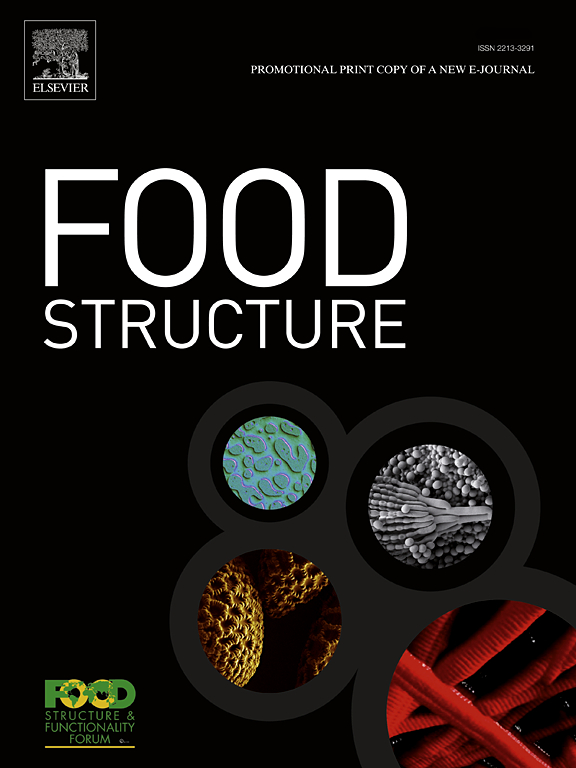Characterization and quantification of anisotropy in mozzarella cheese: Exploring the impact of structural anisotropy on functional properties using complementary analytical technologies
IF 5.9
3区 农林科学
Q1 FOOD SCIENCE & TECHNOLOGY
引用次数: 0
Abstract
Mozzarella cheese is a key ingredient in many cuisines, valued for its creamy texture and its exceptional popularity as a pizza topping. The unique melting and stretching behavior is closely linked to its structural anisotropy, which can be modulated by production conditions. The textural anisotropy of the cheese significantly influences its viscoelastic and thermodynamic properties when heated. This paper explores how process parameters influence mozzarella structure, utilizing Fluorescence Anisotropy (FA) and Oblique Incidence Reflectometry (OIR) for anisotropy quantification. To corroborate the results, our study incorporates detailed microstructural analysis via X-ray computed tomography (CT). The ultimate product functionality of the mozzarella cheese is evaluated from both a consumer and quality perspective by assessing its performance in pizza baking. The key findings of our study indicate that the determinations of anisotropy by FA and OIR are highly correlated with each other and with important functional properties and process parameters. Functional parameters associated with blisters negatively correlate with anisotropy, while oiling and meltability exhibit a positive correlation with anisotropy values. The anisotropy values observed through FA and OIR further align closely with CT images, as well as with pizza functionality and consumer tests.
马苏里拉奶酪各向异性的表征和定量:利用互补分析技术探索结构各向异性对功能特性的影响
马苏里拉奶酪是许多菜系的关键原料,因其奶油般的质地和作为披萨配料的特殊受欢迎程度而受到重视。其独特的熔化和拉伸行为与其结构的各向异性密切相关,而各向异性可以通过生产条件进行调节。干酪的各向异性显著影响其加热后的粘弹性和热力学性能。本文利用荧光各向异性(FA)和斜入射反射法(OIR)定量分析了工艺参数对马苏里拉干酪结构的影响。为了证实结果,我们的研究结合了x射线计算机断层扫描(CT)的详细显微结构分析。通过评估其在披萨烘焙中的表现,从消费者和质量的角度来评估马苏里拉奶酪的最终产品功能。本研究的主要发现表明,红外光谱和红外光谱测定各向异性具有高度相关性,并与重要的功能特性和工艺参数密切相关。与起泡相关的功能参数与各向异性呈负相关,而润滑性和熔融性与各向异性值呈正相关。通过FA和OIR观察到的各向异性值进一步与CT图像、披萨功能和消费者测试密切一致。
本文章由计算机程序翻译,如有差异,请以英文原文为准。
求助全文
约1分钟内获得全文
求助全文
来源期刊

Food Structure-Netherlands
Chemical Engineering-Bioengineering
CiteScore
7.20
自引率
0.00%
发文量
48
期刊介绍:
Food Structure is the premier international forum devoted to the publication of high-quality original research on food structure. The focus of this journal is on food structure in the context of its relationship with molecular composition, processing and macroscopic properties (e.g., shelf stability, sensory properties, etc.). Manuscripts that only report qualitative findings and micrographs and that lack sound hypothesis-driven, quantitative structure-function research are not accepted. Significance of the research findings for the food science community and/or industry must also be highlighted.
 求助内容:
求助内容: 应助结果提醒方式:
应助结果提醒方式:


